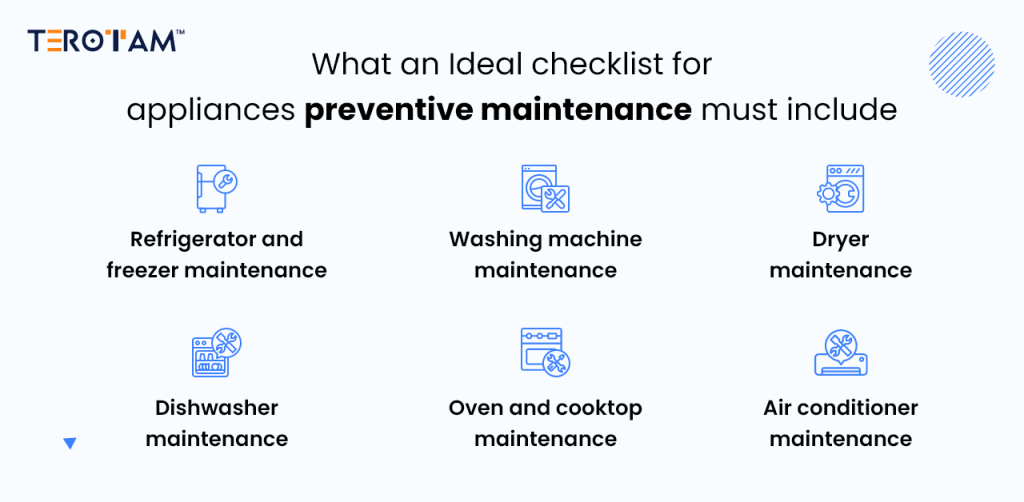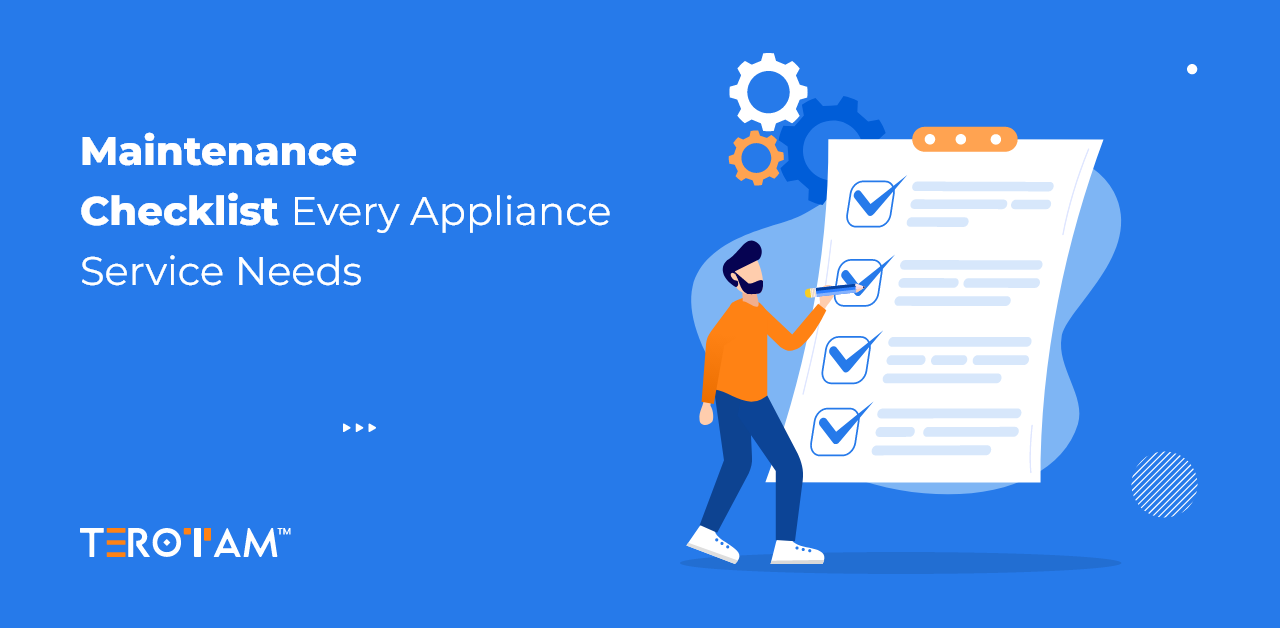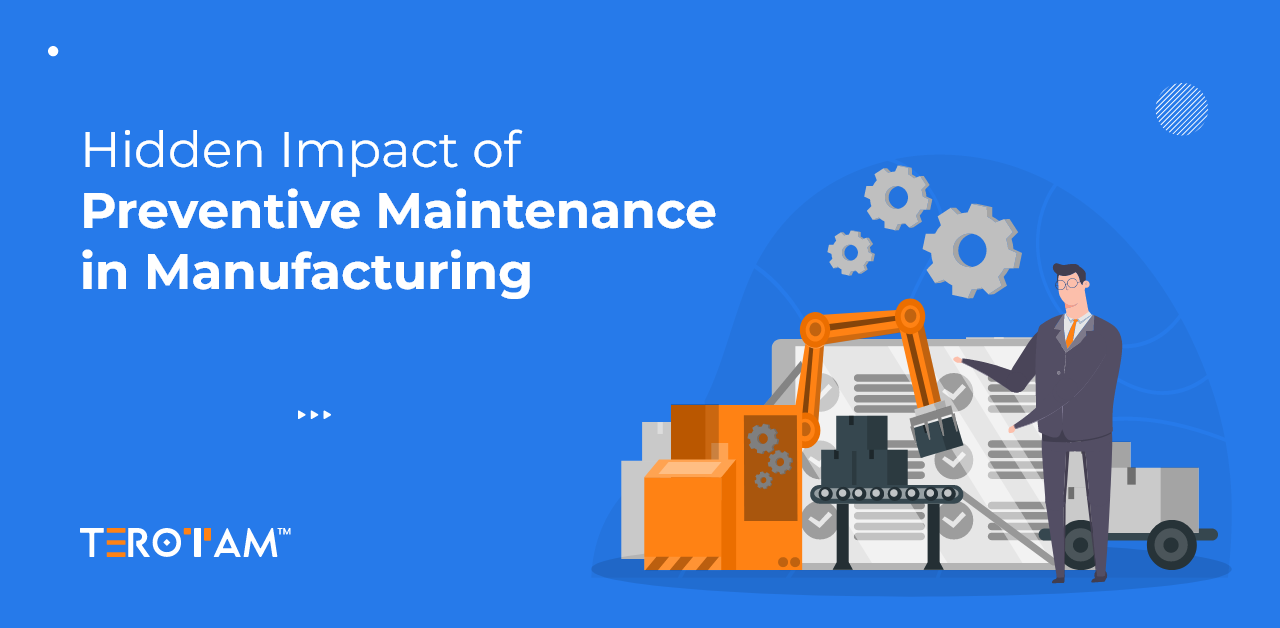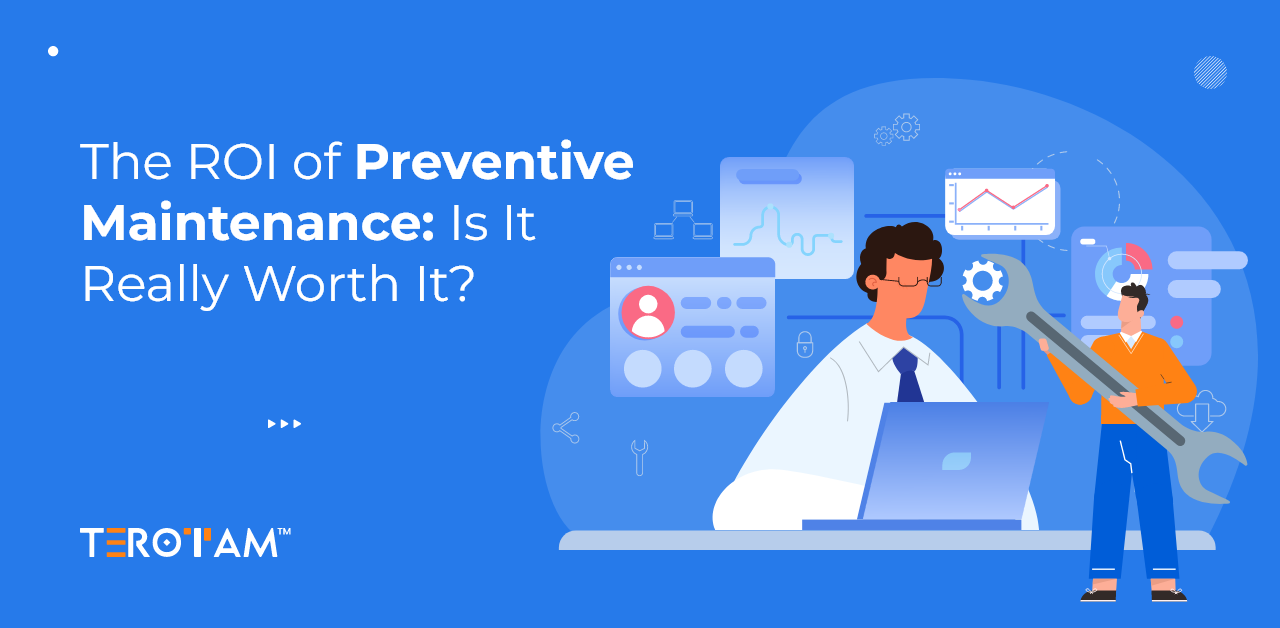For appliance repair service providers, breakdown prevention is as important as timely repairs. Preventive maintenance (PM) not only extends the lifespan of appliances but also reduces sudden failures and improves service efficiency. It ensures customers face fewer disruptions and service teams can plan their work more effectively.
In a competitive service environment, having a well-structured PM checklist helps technicians carry out inspections, cleaning, and adjustments without missing critical steps. From refrigerators and washing machines to ovens and air conditioners, consistent maintenance keeps performance high and prevents minor faults from turning into costly repairs.
This article covers a detailed preventive maintenance checklist for appliance repair services, breaking down the tasks by appliance type, safety, calibration, and customer education.
Why preventive maintenance matters in appliance repair services?
A planned maintenance program allows technicians to assess appliance condition using targeted inspections, performance measurements, and functional testing. This process helps detect wear, electrical irregularities, thermal inefficiencies, and flow restrictions early, allowing repairs to be completed before they disrupt the appliance’s operation.
Consistent preventive work also creates reliable service records that track component performance over time. These records make it easier to anticipate part replacements, schedule visits efficiently, and maintain appliances within safe operating limits while meeting manufacturer specifications.
- Minimises compressor strain in refrigeration units through coil cleaning and airflow optimisation
- Detects early-stage motor bearing wear in washers and dryers using vibration and noise analysis
- Reduces heating element failure risk in ovens and dryers with periodic continuity and resistance checks
- Maintains temperature accuracy in cooling and cooking units through routine thermostat or sensor calibration
- Prevents refrigerant charge loss in air conditioners with pressure monitoring and leak detection tests
- Prolongs hose and seal life by replacing inlet and drain connections showing early signs of fatigue
- Improves electrical efficiency by confirming components operate within rated voltage and current thresholds
- Ensures consistent control system performance by cleaning PCB housings and verifying sensor signal stability
What an Ideal checklist for appliances preventive maintenance must include?
Preventive maintenance for appliances should be systematic, starting with an initial inspection, safety checks, and then moving to cleaning, lubrication, calibration, and documentation. The following checklist is designed for technicians to use during AMC visits or scheduled service calls.

1. Refrigerator and freezer maintenance
Keeping cooling units efficient requires a focus on airflow, sealing, and compressor performance.
- Check door gasket seal – Test with a paper slip to ensure the gasket holds firmly; replace if cracked or loose.
- Clean condenser coils and fans – Remove dust and debris to improve airflow and reduce compressor strain.
- Inspect drain systems – Clear blocked drain pans or tubes to prevent water pooling.
- Test electrical parameters – Measure supply voltage and current draw; match to manufacturer specifications.
- Calibrate temperature controls – Verify thermostat or sensor accuracy at different setpoints.
2. Washing machine maintenance
Both top-load and front-load machines need checks on water supply, load balance, and drive health.
- Inspect inlet and hoses – Clean inlet filters, test valves for proper flow, and replace worn hoses every few years.
- Check drum bearings – Listen for noise during spin cycles and assess bearing wear.
- Descale and clean tub – Remove limescale buildup to improve wash quality.
- Test control components – Check door locks, pressure switches, and load sensors for proper function.
3. Dryer maintenance
Heat efficiency and lint control are top priorities for dryers.
- Clean lint paths and vents – Remove obstructions from ducts to reduce fire risk and improve airflow.
- Inspect mechanical drive – Check belts, pulleys, and rollers for wear and lubricate if needed.
- Test heating elements – Verify continuity and thermostat operation to maintain even drying.
- Check moisture sensors – Ensure accurate readings to prevent overdrying or damp results.
4. Dishwasher maintenance
Dishwashers need attention to spray performance, heating, and drainage.
- Clean spray arms and filters – Remove debris to keep water jets clear.
- Inspect water inlet systems – Check hoses and valves for unrestricted flow.
- Test heating components – Confirm water temperature meets cleaning requirements.
- Check seals and latches – Ensure leak-free operation on all cycles.
5. Oven and cooktop maintenance
Safety and accurate temperature control are the main focus.
- Inspect electrical and gas systems – Check cords, terminals, and grounding; perform leak tests for gas units.
- Clean burners and igniters – Remove residue to maintain stable flame or heating.
- Calibrate oven temperature – Test at multiple setpoints to ensure accurate cooking performance.
- Verify safety shut-offs – Ensure all protective systems operate correctly.
6. Air conditioner maintenance
Cooling efficiency depends on clean heat exchangers, refrigerant health, and proper drainage.
- Clean filters and coils – Wash indoor filters and remove dirt from evaporator and condenser fins.
- Check refrigerant system – Measure pressures, superheat, and subcool where applicable.
- Inspect insulation and drainage – Replace damaged pipe insulation and clear condensate drains.
- Test controls and sensors – Ensure remote, thermostat, and airflow vanes operate correctly.
Along with these maintenance checklists, one must carry some additional checklists for safety, cleaning & lubrication, performance test post maintenance etc., that help the maintenance and service to be carried at the full capacity. Let’s take a look at some of those additional checklists below.
Electrical & safety checklist (all appliances)
Keep this standard across every visit.
- Confirm proper earthing and tight terminals; no discoloration or heat marks.
- Check plug, cord, and strain relief for cuts or exposed copper.
- Use RCD/GFCI test button where available; advise installation if missing.
- Verify leakage current is within safe limits using clamp metres.
Cleaning & lubrication checklist
Small cleaning tasks prevent big failures.
- Remove dust from PCB enclosures; ensure vents are clear.
- Use food-safe cleaners for refrigerators/dishwashers where required.
- Lubricate hinges, door latches, and moving linkages with approved lubricants.
Calibration & performance tests
Document before/after values for credibility and trend tracking.
- Temperature probes (fridge/oven/AC) with reference thermometer.
- Flow rate and pressure for inlets (washer/dishwasher).
- Current draw across modes; compare with historical logs.
- Spin speed verification for washers; heat cycle timing for dryers.
Consumables & spares to carry
Carry a compact kit to close jobs in one visit.
- Universal inlet hoses, clamps, and seals; lint filters; door gaskets (common sizes).
- Relays, fuses, thermostats, thermistors, and capacitors (popular ratings).
- Descalers, coil cleaners, food-safe sprays, PTFE tape, O-rings.
- Belts, pulleys, and rollers for common dryer/washer models.
Customer education checklist
Two minutes of coaching cuts misuse-related failures.
- Show correct loading, detergent use, and basic filter cleaning.
- Share power/voltage stabilizer guidance for sensitive models.
- Advise ventilation gaps around refrigerators and dryers.
- Set reminders for seasonal AC service before peak heat.
What KPIs should service managers track for appliance maintenance performance?
Monitoring the right key performance indicators helps service managers measure maintenance effectiveness, optimise resource use, and improve customer retention. Tracking these metrics regularly ensures performance targets are met and service quality remains consistent.
- First-time fix rate (FTFR) – Percentage of jobs resolved during the initial visit without return calls
- Repeat service call percentage – Proportion of jobs requiring follow-up visits for the same issue
- Average job completion time – Time taken from arrival to completion, including testing and documentation
- Technician productivity ratio – Active service time versus total shift hours, excluding travel delays
- Parts consumption per appliance type – Average replacement part usage by equipment category
- AMC renewal rate – Percentage of maintenance contracts renewed at the end of term
- Customer satisfaction score (CSAT/NPS) – Direct feedback rating from customers after service visits
Quick seasonal preventive maintenance planner
A seasonal PM plan ensures appliances are ready for environmental and usage changes throughout the year. By aligning inspections and adjustments with seasonal demands, technicians can prevent peak-season failures, optimise performance, and extend component life.
Spring – Prepare cooling appliances before summer demand
- Clean condenser and evaporator coils for optimal heat exchange
- Inspect refrigerant lines for leaks and measure system pressure
- Replace or clean air filters to maintain airflow efficiency
- Test thermostat accuracy and recalibrate if required
- Flush condensate drains to prevent water damage and microbial growth
Summer – Maintain high-load and continuous-run appliances
- Inspect condenser fans and check motor amperage draw
- Perform voltage drop tests on heavy-load circuits to avoid overheating
- Monitor compressor cycling frequency to detect inefficiency
- Test freezer door gaskets for air leaks using light or feeler method
Autumn – Transition to heating-focused equipment
- Inspect and clean oven heating elements for even temperature output
- Test dryer heating coils and verify thermal cut-off switch function
- Check water heater thermostats and pressure relief valves
- Inspect exhaust and ventilation ducts for lint or soot buildup
- Verify insulation integrity in cooking and warming equipment
Winter – Service heating units and protect idle cooling appliances
- Measure electrical resistance in heating elements to detect early failure signs
- Inspect dryer vents for blockages to prevent fire hazards
- Run unused AC compressors briefly to lubricate internal seals
- Test defrost cycles in refrigerators and freezers for proper operation
- Check humidifier and dehumidifier sensors for accurate readings
- Inspect water inlet valves for signs of freezing or mineral buildup
Technician toolkit (essentials)
Equip every van for predictable outcomes.
- True RMS multimeter, clamp meter, insulation tester.
- Manifold gauges or digital probes for HVAC tasks.
- Temperature probes, anemometer, and infrared thermometer.
- Basic hand tools, nut drivers, torque screwdriver, fin comb.
- Leak detector spray, UV dye kit (where permitted), vacuum pump (HVAC).
Sample PM visit flow
Keep it steady and repeatable.
- Greet, confirm complaint history, and run a quick functional check.
- Isolate power/gas, open panels, and perform internal tasks.
- Clean, tighten, lubricate, and replace wear parts as needed.
- Reassemble, test performance, and record readings.
- Educate the customer and secure sign-off with photos.
Summing it up

In appliance repair, the real win comes from preventing downtime before it happens. A solid preventive maintenance checklist keeps your service team organised, helps spot issues early, and ensures every appliance runs safely and efficiently. The result? Fewer emergencies, happier customers, and smoother day-to-day operations.
With TeroTAM’s CMMS solution, you can plan, track, and optimise every maintenance task from a single platform. From scheduling seasonal PMs to monitoring KPIs, it gives you complete control over your service process. Get in touch with us today and see how it can transform your appliance repair services.








